28 Nights | Europe
About Naples, Italy
You will visit the following 19 places:

United Kingdom
The United Kingdom of Great Britain and Northern Ireland, commonly known as the United Kingdom (UK) or Britain is a sovereign state in Europe. Lying off the northwestern coast of the European mainland, it includes the island of Great Britain (the name of which is also loosely applied to the whole country), the north-eastern part of the island of Ireland, and many smaller islands. Northern Ireland is the only part of the UK that shares a land border with another state—the Republic of Ireland. Apart from this land border, the UK is surrounded by the Atlantic Ocean, with the North Sea to its east, the English Channel to its south and the Celtic Sea to its south-southwest, attributing to it having the 12th longest coastline in the world. The Irish Sea lies between Great Britain and Ireland. With an area of 242,500 square kilometres (93,600 sq mi), the UK is the 78th-largest sovereign state in the world and the 11th-largest in Europe. It is also the 22nd-most populous country, with an estimated 65.1 million inhabitants. Together, this makes it the fourth most densely populated country in the European Union. Whether you wish to walk in the steps of giants in Antrim, to immerse yourself in Celtic culture at Eisteddfod, to pound the streets of an English urban jungle, to climb, ski or snowboard Cairngorms-style or simply to dream of having tea with the Queen, there is something for everyone in the United Kingdom.
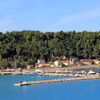
Katákolo
Katakolon, or Katakolo is a seaside town in the municipality of Pyrgos in western Elis, Greece. It is situated on a headland overlooking the Ionian Sea and separating the Gulf of Kyparissia from the rest of the Ionian. It is 11 km west of downtown Pyrgos. The small village of Agios Andreas, which in ancient times was the natural harbour for Ancient Olympia, lies northwest of Katakolo. A railway connects Katakolo with Pyrgos and Olympia, but along with the rest of the rail network in the Peloponnese, services have been suspended since 2011 for economic reasons.

Antwerp
Belgium’s second largest and international port city with history dating to the Middle Ages, Antwerp is a major destination in Belgium in the region of Flanders. It has a beautiful historic city center, and is world-renowned for its fashion industry. Renowned for being the "world's leading diamond city", more than 70% of all diamonds are traded in Antwerp. Due to its long and culturally rich history, the city of Antwerp houses many interesting historical buildings from different historical periods, as well as a lot of interesting museums. Recently it has become a trendy city, attracting a lot of Flemish and foreign artists, writers, intellectuals, and actors.
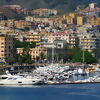
Messina
Messina is a harbor city in northeast Sicily, Italy. It is the capital of the Italian Metropolitan City of Messina, and has close ties with Reggio Calabria. The city's main resources are its seaports (commercial and military shipyards), cruise tourism, commerce, and agriculture (wine production and cultivating lemons, oranges, mandarin oranges, and olives). The city has been a Roman Catholic Archdiocese and Archimandrite seat since 1548 and is home to a locally important international fair. The city has the University of Messina, founded in 1548 by Ignatius of Loyola. Messina has a light rail system, Tranvia di Messina, that was opened on 3 April 2003. This line is 7.7 kilometres (4.8 mi) and links the city's central railway station with the city centre and harbour. The city is home to a significant Greek-speaking minority, rooted in its history and officially recognised.

Rhodes
Rhodes is the largest of the Dodecanese islands in terms of land area and also the island group's historical capital. Administratively the island forms a separate municipality within the Rhodes regional unit, which is part of the South Aegean administrative region. It is located northeast of Crete, southeast of Athens and just off the Anatolian coast of Turkey. Rhodes' nickname is The island of the Knights, named after the Knights of Saint John of Jerusalem, who once conquered the land. Historically, Rhodes was famous worldwide for the Colossus of Rhodes, one of the Seven Wonders of the Ancient World. The Medieval Old Town of the City of Rhodes has been declared a World Heritage Site. Today, it is one of the most popular tourist destinations in Europe.

Haifa International Airport
Haifa is the third-largest city in the State of Israel. It is home to the Bahá'í World Centre, a UNESCO World Heritage Site and a destination for Baha'i pilgrims. Built on the slopes of Mount Carmel, the settlement has a history spanning more than 3,000 years. The earliest known settlement in the vicinity was Tell Abu Hawam, a small port city established in the Late Bronze Age (14th century BCE). In the 3rd century CE, Haifa was known as a dye-making center. Today, the city is a major seaport located on Israel's Mediterranean coastline in the Bay of Haifa covering 63.7 square kilometres (24.6 sq mi). The city plays an important role in Israel's economy. It is also home to Matam, one of the oldest and largest high-tech parks in the country. Haifa Bay is a center of heavy industry, petroleum refining and chemical processing. Haifa formerly functioned as the western terminus of an oil pipeline from Iraq via Jordan.

Naples
Naples is a city in Italy; it is the capital of the region of Campania and of the province of Naples. Known for its rich history, art, culture, architecture, music, and gastronomy, Naples has played an important role in the Italian peninsula and beyond for much of its existence, which began more than 2,800 years ago. Situated on the west coast of Italy by the Gulf of Naples, the city is located halfway between two volcanic areas, Mount Vesuvius and the Phlegraean Fields. Naples has the fourth-largest urban economy in Italy, after Milan, Rome and Turin. It is the world's 103rd-richest city by purchasing power, with an estimated 2011 GDP of US$83.6 billion. The port of Naples is one of the most important in Europe, and has the world's second-highest level of passenger flow, after the port of Hong Kong. The city has long been a major cultural centre with a global sphere of influence, particularly during the Renaissance and Enlightenment eras. In the immediate vicinity of Naples are numerous culturally and historically significant sites, including the Palace of Caserta and the Roman ruins ofPompeii and Herculaneum. Culinarily, it is synonymous with pizza, which originated in the city.
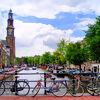
The Convent Amsterdam
Amsterdam is the capital of the Kingdom of the Netherlands. It is the country's largest city and its financial, cultural, and creative centre. Many large Dutch institutions have their headquarters there, and seven of the world's 500 largest companies, including Philips and ING, are based in the city. In 2012, Amsterdam was ranked the second best city in which to live by the Economist Intelligence Unit (EIU) and 12th globally on quality of living for environment and infrastructure by Mercer. Amsterdam derives its name from the city’s origin as “Dam” of river “Amstel”. In the past, the name was "Amstelredamme" which later changed as “Amsterdam”. The city is one of the most popular destinations in Europe, attracting over 7 million international travellers annually. The city is colloquially known as ''Venice of the North'' because of its lovely canals that criss-cross the city, its impressive architecture and more than 1,500 bridges. There is something for every traveller's taste here; whether you prefer culture and history, serious partying, or just the relaxing charm of an old European city!
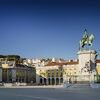
Lisbon
The capital of Portugal, Lisbon (Portuguese: Lisboa) has experienced a renaissance in recent years, with a contemporary culture that is alive and thriving and making its mark in today's Europe. Perched on the edge of the Atlantic Ocean, Lisbon is one of the rare Western European cities that faces the ocean and uses water as an element that defines the city. Lisbon enchants travellers with its white-bleached limestone buildings, intimate alleyways, and an easy-going charm that makes it a popular year-round destination.

Bordeaux
Bordeaux is a port city on the Garonne River in southwest France, with an estimated (2008) population of 250,082. The Bordeaux-Arcachon-Libourne metropolitan area, has a population of 1,010,000 and constitutes the sixth-largest urban area in France. It is the capital of the Aquitaine region, as well as the prefecture of the Gironde department. Its inhabitants are called Bordelais. Bordeaux is the world's major wine industry capital. It is home to the world's main wine fair, Vinexpo, while the wine economy in the metro area moves 14.5 billion euros each year. Bordeaux wine has been produced in the region since the eighth century. The historic part of the city is on the UNESCO World Heritage List as "an outstanding urban and architectural ensemble" of the 18th century.

Heraklion
Iraklion (also called Heraklion) is the largest city and capital of Crete. It is also the fourth largest city in Greece. It is the capital of Heraklion Prefecture, with an international airport named after the writer Nikos Kazantzakis. The ruins of Knossos, which were excavated and restored by Arthur Evans, are nearby. Iraklio has a certain urban sophistication, with a thriving cafe and restaurant scene, the island’s best shopping and lively nightlife.
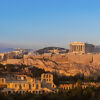
Athens
Athens is the capital and largest city of Greece. Athens dominates the Attica periphery and it is one of the world's oldest cities, as its recorded history spans around 3,400 years. The city is widely referred to as the cradle of Western civilization and the birthplace of democracy, largely because of its cultural and political impact on the European continent and in particular the Romans. In modern times, Athens is a large cosmopolitan metropolis and central to economic, financial, industrial, maritime, political and cultural life in Greece. Its compact downtown, north of campus, is alive with clubs, bars, restaurants, galleries and – of course – record stores; Broad Street in particular is lined with arty shops.

Nafplion

La Rochelle

Cartagena
Cartagena is a Spanish city and a majornaval station located in the Region of Murcia, by the Mediterranean coast, south-eastern Spain. The metropolitan area of Cartagena, known as Campo de Cartagena, has a population of 409,586 inhabitants. Cartagena has been inhabited for over two millennia, being founded around 227 BC by the Carthaginian Hasdrubal the Fair as Qart Hadasht, the same name as the original city of Carthage. Much of the historical weight of Cartagena in the past goes to its coveted defensive port, one of the most important in the western Mediterranean. As far back as the 16th century it was one of the most important naval ports in Spain, together with Ferrol in the North. It is still an important naval seaport, the main military haven of Spain, and is home to a large naval shipyard. The confluence of civilizations as well as its strategic harbour, together with the rise of the local mining industry is manifested by a unique artistic heritage, with a number of landmarks such as the Roman Theatre, the second largest of the Iberian Peninsulaafter the one in Mérida, an abundance of Phoenician, Roman, Byzantine and Moorish remains, and a plethora of Art Nouveaubuildings, a result of the bourgeoisie from the early 20th century. Cartagena is now established as a major cruise ship destination in the Mediterranean and an emerging cultural focus. It is the first of a number of cities that eventually have been named Cartagena, most notably Cartagena de Indias (Cartagena of the Indies) in Colombia.

Rouen
Rouen is a city on the River Seine in the north of France. It is the capital of the region of Normandy. Formerly one of the largest and most prosperous cities of medieval Europe, Rouen was the seat of the Exchequer of Normandy during the Middle Ages. It was one of the capitals of the Anglo-Norman dynasties, which ruled both England and large parts of modern France from the 11th to the 15th centuries. An important city in the Roman era and Middle Ages, it has Gothic churches and a cobblestoned pedestrian center with hundreds of medieval half-timbered houses.
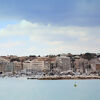
Civitavecchia
Civitavecchia is a town and comune of the Metropolitan City of Rome in the central Italian region of Lazio. A sea port on the Tyrrhenian Sea, the name ''Civitavecchia'' means "ancient town". The modern city was built over a pre-existing Etruscan settlement. The massive Forte Michelangelo was first commissioned from Donato Bramante by Pope Julius II, to defend the port of Rome. The upper part of the "maschio" tower, however, was designed by Michelangelo, whose name is generally applied to the fortress. North of the city at Ficoncella are the Terme Taurine baths frequented by Romans and still popular with the Civitavecchiesi. The modern name stems from the common fig plants among the various pools. And also next to the town is the location of the cruise ship docks. All major cruise lines start and end their cruises at this location, and others stop for shore excursion days that allow guests to see Rome and Vatican sights, which are ninety minutes away.

Seine River











